Industry Analysis: Definition, Methods, How to Do, Example

Industry analysis is a process that involves evaluating the overall state and future prospects of a particular industry. Industry analysis provides vital insights for strategic planning and investment decisions. Industry analysis requires comprehensively examining various factors that influence an industry’s attractiveness, competition, and profitability potential.
The main elements covered in any industry analysis include defining the precise industry boundaries, assessing the number and size of competitors, analyzing supplier and buyer power dynamics, evaluating growth trends and total addressable market size, gauging technological changes and their impacts, examining regulatory frameworks and political influences, profiling major competitors, identifying risks and limitations, and testing price sensitivities.
Conducting in-depth research across these various dimensions through established frameworks like Porter’s Five Forces, PESTEL, SWOT and using industry data sources allows for a well-rounded understanding of an industry’s structure, economics, risks and opportunities. A rigorous industry analysis then informs strategic positioning, resource allocation, operational benchmarking and investment decisions.
What is industry analysis?
Industry analysis is the process of evaluating an industry’s current state and future outlook. It involves examining the industry’s characteristics, competition, growth trends, key success factors, and overall attractiveness to understand profit potential.
Key steps include defining the industry and analyzing its structural characteristics like the life cycle stage, number and size of competitors, competitive dynamics, regulations, technological change, entry/exit barriers, substitutes, and supplier/buyer power. The analysis also evaluates size and growth trends, market share, profitability, and competitor strengths and weaknesses. The end goal is to synthesize findings into an industry outlook that highlights strategic opportunities and threats. Effective industry analysis provides fact-based insights to guide strategic decisions and investments.
What are the popular frameworks of industry analysis?
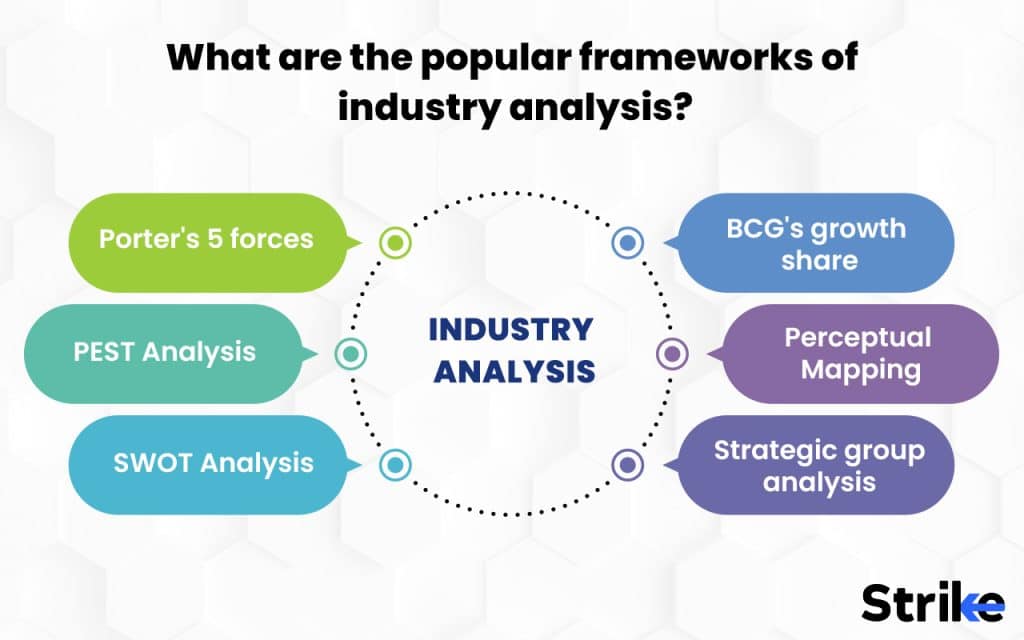
The most commonly used frameworks of industry analysis includes Porter’s Five Forces, PEST analysis, SWOT analysis, BCG Growth-Share Matrix, perceptual mapping, and strategic group mapping.
1.Porter’s five forces
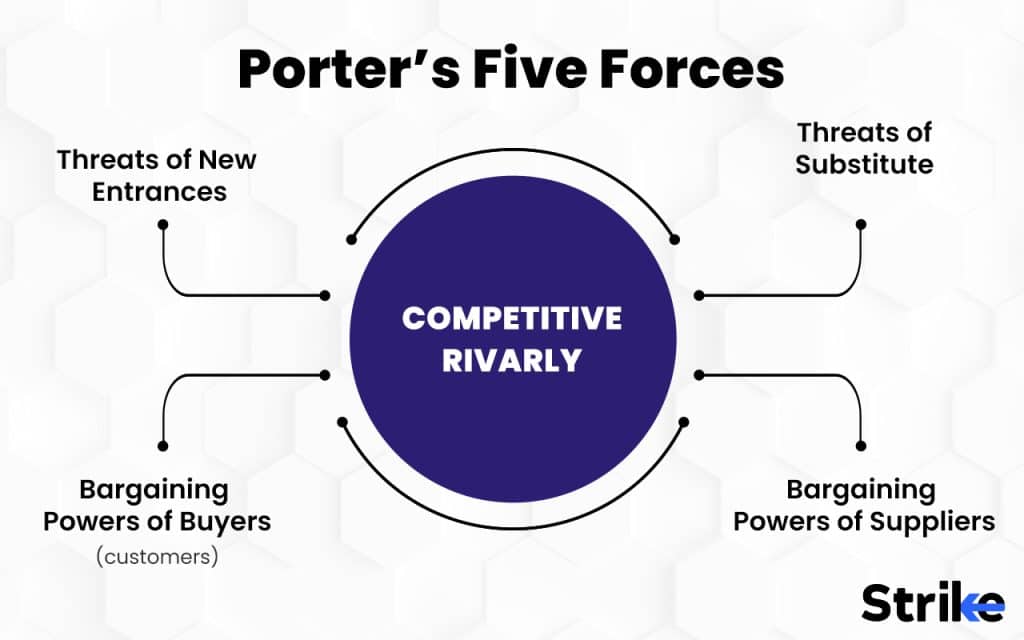
Porter’s Five Forces examines the competitiveness within an industry by looking at the threat of new entrants, threat of substitutes, bargaining power of suppliers, bargaining power of buyers, and rivalry among existing competitors. It provides perspective into inherent industry profit potential shaped by competitive forces. High barriers to entry, lack of close substitute products, dispersed suppliers and buyers with low bargaining power, and minimal competitive rivalry implies higher profit potential. Intense rivalry, easy entry, potent substitutes, and concentrated suppliers/buyers suggest lower profitability.
2. PEST analysis
PEST analysis evaluates the external political, economic, socio-cultural, and technological environment. It identifies potential opportunities to tap into as well as threats to prepare for. Political factors include government stability, policies, regulation, and trade restrictions. Economic factors consider growth rates, interest rates, inflation, disposable income, and other macroeconomic conditions. Socio-cultural forces encompass demographics, income distribution, social norms, lifestyles, and public opinion. Technological factors look at innovations, adoption rates, R&D trends, and developments that disrupt the industry.
3. SWOT analysis
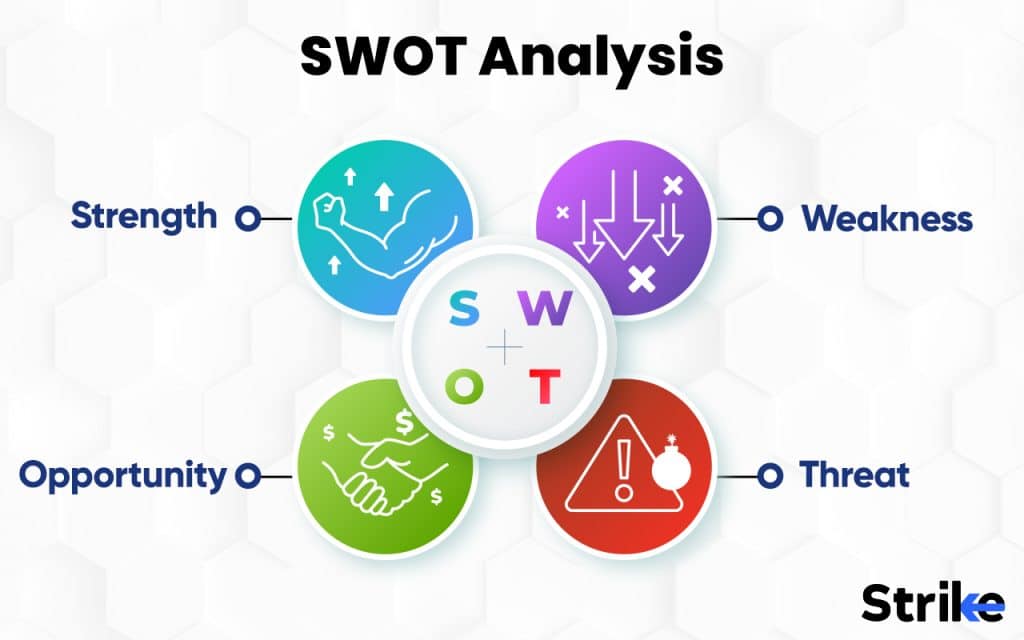
A SWOT analysis examines the internal strengths and weaknesses of firms in an industry along with external opportunities and threats. Strengths represent competitive advantages and distinctive capabilities. Weaknesses are deficiencies that create disadvantages. Opportunities comprise favorable external developments that are capitalized on. Threats include unfavorable industry trends and macro-environmental forces. SWOT provides perspective on internal positioning and external developments that impact strategy.
4. BCG’s growth share
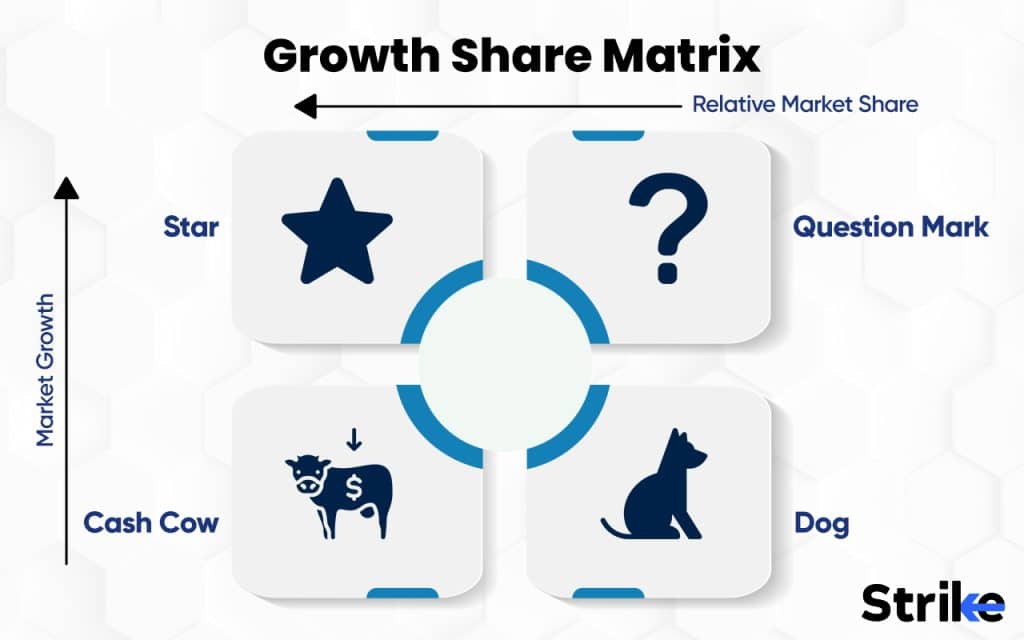
The BCG Growth-Share Matrix evaluates competitive position based on market share and growth rate. Industry players are categorized as stars, cash cows, dogs, or question marks. Stars have high growth and high market share signaling opportunities. Cash cows have high share but slow growth so profits should be harvested. Dogs have low share and flat or declining growth indicating weakness. Question marks are growing rapidly but have low share implying potential if their market position is strengthened.
5. Perceptual mapping
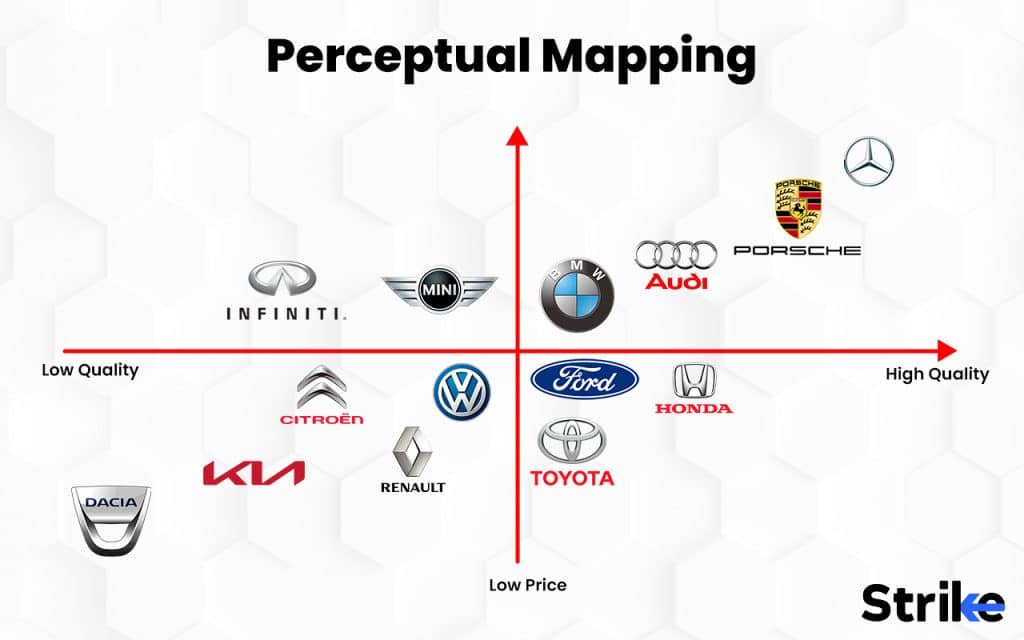
Perceptual mapping displays consumer perceptions of key product attributes and preferences. Industry offerings are mapped based on attributes like price, quality, features, style, and orientation to compare positioning. Maps reveal ideal positions to target and gaps or clusters in the market. This facilitates strategic decisions on product differentiation, branding, and marketing based on consumer perceptions.
6. Strategic group analysis
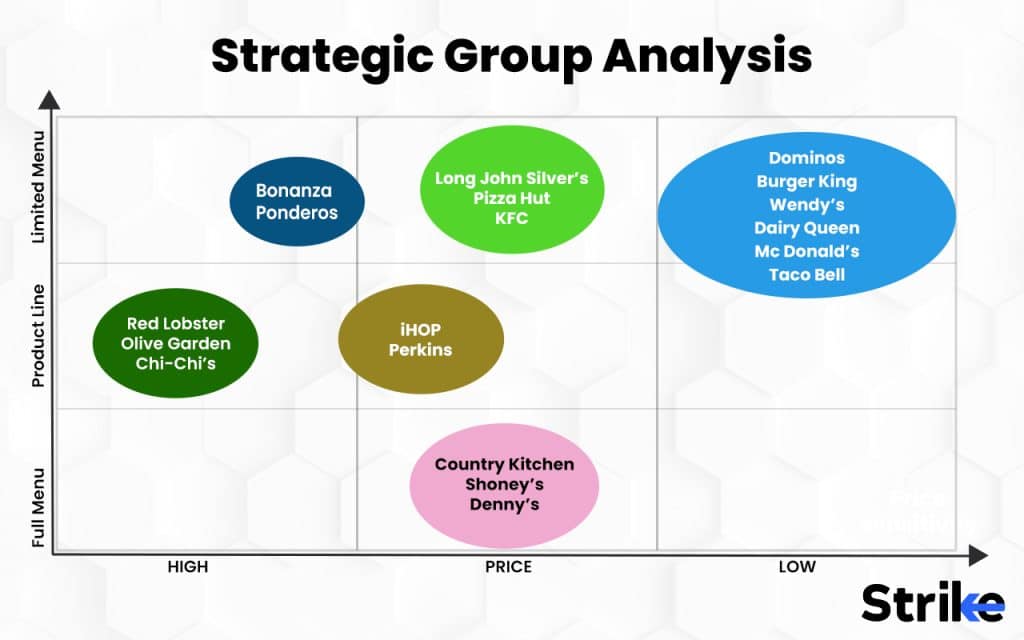
Strategic group analysis divides industry players into groups based on similarities in offerings, capabilities, strategies, or other traits. Typically strategic groups reflect different competitive positions targeting certain market segments. Grouping companies reveals insights into competitive dynamics and strategic implications. Leaders want to solidify position while laggards need to reposition themselves.
Applying these industry analysis frameworks leads to a comprehensive outlook to inform strategic decisions and planning.
How do you do industry analysis?
Examining the suppliers, customers, forecasts, oversight, prejudices, innovations, demographic characteristics, competing organizations, risks, limitations, and price elasticity are all important considerations when evaluating a sector for possible equity investments.
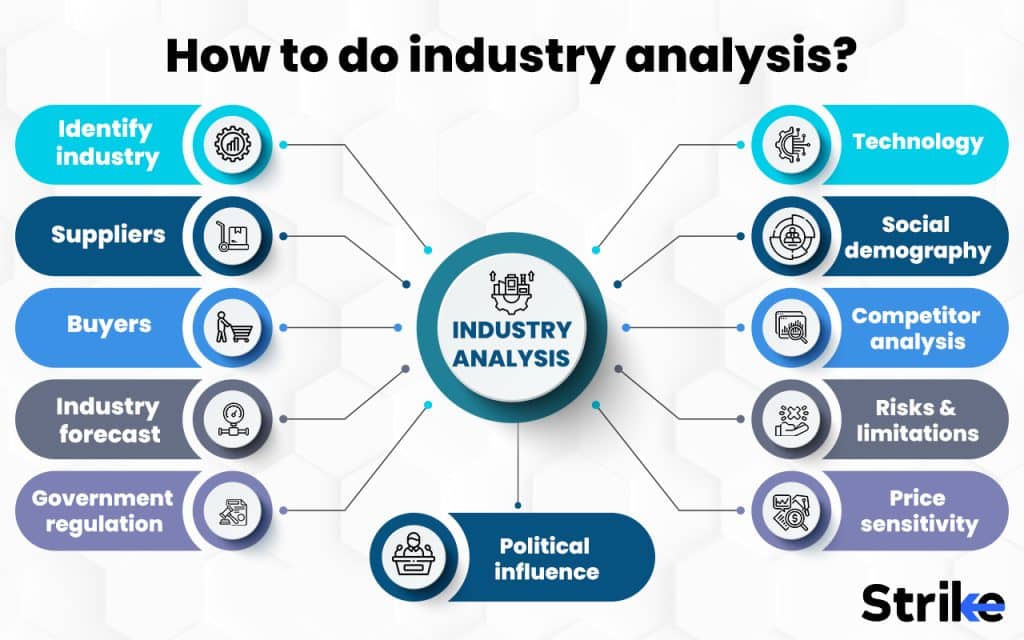
1. Identify industry
The first step in industry analysis is precisely defining the industry, which establishes the scope of analysis. Industries are commonly segmented using standard classification systems like NAICS or SIC codes. However, the analyst defines the industry more broadly or narrowly as needed to align with business objectives. For example, large diversified conglomerates analyze a wide industry encompassing all their business segments. Small startups analyze a niche sector.
The key is to define segments that have distinct economics, supply/demand drivers, regulations, distribution channels, and other dynamics. Data availability also affects industry definitions. Parameters like geographic markets, product categories, and customer types help precisely delineate the industry boundaries.
2. Suppliers
Analyzing industry suppliers reveals supplier power, which impacts profit margins. Suppliers with significant negotiating leverage extract higher prices, lowering profitability. Factors like industry concentration, differentiation, switching costs, and substitution threat determine supplier power. A highly concentrated supply base with few large companies indicates potential supplier strength.
Unique products that are difficult to substitute also increase leverage. High supplier switching costs constrain buyer negotiating power. On the other hand, a fragmented supply base with many equivalents reduces supplier power. Substitute products further erode supplier pricing control. Assessing these dynamics indicates whether the supply environment is favorable or puts margin pressure on industry players.
3. Buyers
Buyer analysis provides perspective on buyer negotiating leverage, which also affects profitability. Powerful buyers force down prices, squeezing margins. Buyer concentration is a key factor, with a small number of large buyers able to exert influence. Buyers incurring low switching costs to change suppliers also gain bargaining power. Buyer price sensitivity matters, as does the availability of substitute industry offerings.
However, high switching costs and a lack of equivalents imply weaker buyer positions. Buyer power has direct profitability implications, making this analysis critical. Beyond power dynamics, analyzing buyer demographics, purchasing criteria, decision making processes, and distribution channels provides strategic insights. Identifying the most attractive buyer groups to target helps position offerings and marketing appropriately.
4. Industry forecast
Developing an industry outlook involves assessing growth potential through forecasting. Top-down forecasting starts with macroeconomic projections of GDP, jobs, inflation, interest rates, and other variables that drive industry performance. These are used to forecast broad industry growth trends. Bottom-up forecasting aggregates projections for key industry metrics like unit sales, shipments, revenues, and capacity.
Historical industry performance is projected into the future considering economic conditions, demographic shifts, regulations, competitive dynamics, technological impacts, and other demand drivers. The final forecast represents an integrated view based on macroeconomic indicators and ground-up industry data. Accurately projecting industry growth provides the foundation for strategy development.
5. Government regulation
Government regulations directly impact competitive dynamics and economics within an industry. Environmental regulations add costs and constraints to production. Safety regulations alter operating processes and costs. Licensing and permits limit industry entry. Antitrust policies affect M&A opportunities and competitive moves.
Tax policies and trade tariffs/restrictions impact pricing flexibility and profits. Compliance costs and constraints posed by government regulations significantly impact strategies and profit margins. A lax regulatory environment presents opportunities to boost revenues and reduce costs. A strict regulatory climate challenges industry profitability. Analyzing the regulatory scheme allows players to assess and respond to risks and opportunities created by government policies.
6. Political influence
The political climate has major implications for an industry beyond formal regulations. Political stability enables consistent long-term planning while instability raises risks. Government support through subsidies, favorable policies, or other means creates advantages for domestic companies. Politically motivated interference poses risks for multinationals.
Interest groups lobbying for regulations that benefit or harm the industry impact the competitive landscape. Economic philosophies of parties in power also influence growth and profit potential. For example, progressive taxation and increased social spending reduce consumer discretionary income. Pro-business administrations promote deregulation and policies fostering industrial growth. Evaluating this political context helps anticipate external risks and opportunities shaped by the government.
7. Technology
Evaluating technological forces provides perspective on risks and prospects driven by innovation. Emerging technologies could disrupt industry value chains if competitors integrate them faster. New technologies also expand capabilities, enable new business models, create higher-value products, or dramatically improve productivity.
However, adapting to new technologies requires investment and organizational change. Failure to keep pace with innovation leaves laggard firms at a major disadvantage. Factors like R&D spending, patent activity, adoption rates, and technology access reflect innovation intensity within an industry. Highly innovative industries must stay on the cutting edge or face disruption. Assessing technological dynamism and impacts ensures firms recognize resulting strategic implications.
8. Social demography
Demographics fundamentally shape product/service demand in an industry. Population size, geographic distribution, age structure, and urbanization rates impact market potential. Household income levels and distribution affect purchasing power. Educational attainment, occupation mixes, cultural values, and lifestyle trends influence consumer behavior. Immigration and emigration flows lead to customer base changes.
Evaluating demographic factors, trends, and shifts provides perspective on evolving customer segments, needs, and preferences. For example, aging populations in developed countries expand demand for healthcare services and products suited to older consumers. High-income growth in emerging markets creates opportunities to tap into rising middle-class demand. Analyzing demographics ensures strategic plans align with demand from tomorrow’s customers.
9. Competitor analysis
Competitor analysis evaluates rivalry dynamics that influence industry outcomes. Market share analysis reveals leaders well positioned for growth versus laggards struggling to compete. Financial analysis highlights profitability drivers and metrics that represent benchmarks to catch up to or surpass. Portfolio analysis compares product/service breadth. Capabilities analysis examines strengths and weaknesses impacting competitiveness.
Strategic analysis reveals approaches for differentiation, cost leadership, focus, and growth. Identifying recent competitor investments provides perspective on expansion plans and commitments. Analyzing competitive dynamics is essential for tailoring a strategy to capitalize on rivals’ weaknesses. Competitor moves must be monitored continuously over time to inform countermoves. Deep competitor insights help position offerings, messaging, and brands for advantage.
10. Risks & limitations
A robust industry analysis identifies risks and limitations impacting participants. Common risks include economic downturns, political changes, disruptive innovations by competitors, input shortages, price wars, customer shifts, and new regulations. Limitations involve finite growth potential due to market saturation, capital intensity constraints, competitive barriers to entry, high fixed costs, and scarce talent. Unknown risks always exist as well.
Sensitivity analysis on industry forecasts helps quantify potential downside scenarios and upside potential. Scenario analysis illuminates the strategic implications of various risk events. However, limitations bound results regardless of the scenario. Recognizing inherent risks and limitations provides the context needed to make informed strategic decisions aligned with industry realities. Firms pursue opportunities within known constraints.
11. Price sensitivity
Price sensitivity analysis assesses how pricing impacts demand within an industry. Inelastic demand implies sales volume is unaffected by price changes, granting firms greater pricing power and flexibility. Elastic demand means volumes fluctuate substantially with price, restricting pricing control. Four factors indicate price sensitivity potential, including buyer demographics, product differentiation, competitive intensity, and the availability of substitutes.
Wealthier buyers are generally less sensitive to price changes. Unique offerings face less elasticity than commoditized products with many equivalents. Pricing power declines at higher competitive rivalry levels. Close substitutes impose pricing ceilings. Analyzing price elasticities by product, customer segment, and geography indicates optimal pricing strategies. Firms maximize revenues through differential pricing across customer tiers with varied willingness to pay. Testing price changes quantifies elasticities. This facilitates data-driven price optimization.
Conducting analysis across these areas leads to accurate industry perspectives and well-informed strategies. Regularly updating the analysis is essential for a strategy to keep pace with market evolution.
What is an example of industry analysis?
The Indian smartphone industry has experienced rapid growth over the last decade, driven by rising consumer purchasing power, declining device costs, and expanding cellular networks. India is now the second-largest smartphone market globally, with annual sales exceeding 150 million units. The industry is expected to grow at a healthy CAGR of 7% from 2022-2027, leading the Indian smartphone market to reach a value of ₹3.2 trillion by 2027.
The Indian smartphone industry comprises manufacturers, component suppliers, distributors, retailers, telecom carriers, and after-sales service providers. Key manufacturers include Xiaomi, Samsung, Vivo, Oppo, Realme, and Transsion brands like Itel. Xiaomi leads with a 28% volume share, followed by Samsung at 19%. Chinese brands collectively account for 75% of the share, having disrupted the duopoly of Samsung and homegrown Micromax since their entry in 2014.
India’s competitive advantage in smartphone manufacturing lies in lower production costs. Labor, land, power, and component sourcing costs are 30-40% cheaper compared to China. This has attracted global manufacturers to set up production in India under the Make in India initiative. Assembly labor costs just ₹135 per hour in India versus ₹202 in China.
The supplier landscape is evolving, with players like Foxconn, Wistron, Dixon, and Optiemus setting up plants in India. However, India still imports 65% of components by value. Domestic value addition needs to rise beyond the current 15-20% levels. Developing the components ecosystem to reduce import dependence is a major priority.
Distribution and sales have shifted online, with e-commerce capturing 45% of smartphone revenues. Offline retail still dominates, though, led by neighborhood stores that drive affordability in small towns. Carrier bundling also remains prominent. After-sales service infrastructure has struggled to keep pace with smartphone penetration. This aftermarket opportunity will potentially grow into a ₹76 billion market by 2025.
What is the importance of industry analysis?
The importance of industry analysis lies in its ability to furnish investors with crucial understandings of the macro-forces, competitive dynamics, prospects for growth, and potential pitfalls confronting corporations in a given industry, empowering more prudent stock selection. Industry analysis helps assess overall attractiveness and profit potential. The analysis examines factors like rivalry, barriers to entry, power dynamics, growth trends, and market share distribution to understand inherent industry profitability and upside potential.
Attractive industries with strong upside are targeted for entry and expansion. Unattractive or risky industries are avoided. The analysis informs strategic planning and competitive positioning. Assessing competitive forces reveals where strategic moves are needed to reshape industry dynamics in a firm’s favor. Insights into changing consumer preferences, emerging technologies, and macro trends allow strategies to be tailored for competitive advantage. Industry analysis provides the strategic context for operating, investing and competing wisely.
What are the top industry analysis tools?
There are many useful tools available for conducting industry analysis. Websites and platforms like Moneycontrol, Trendlyne and Stockal provide insights into sector comparisons and industry trends. However, for a more granular level analysis, tools like Strike are highly effective. Strike is a powerful industry analysis tool that allows users to filter companies by sector and track key metrics. Analysts find Strike very helpful in researching industries deeply and monitoring changes in industry landscapes.
How do you find industry analysis reports?
To find industry analysis reports that provide essential data to evaluate a stock, investors have to subscribe to research services from investment banks and market research firms that produce in-depth profiles examining the dynamics and outlook of specific industries. Well-known research firms like Gartner, Forrester, IDC, Grand View Research, Zion Market Research, and Research and Markets publish thousands of industry reports annually covering trends, forecasts, competitors, and opportunities across all major sectors. Their reports are purchased individually.
Few Indian firms like Invest India, India Brand Equity Foundation (IBEF), CRISIL provide industry analysis reports.
What’s the role of industry analysis in fundamental analysis?
Industry analysis scrutinizes the general financial health, growth opportunities, competitive landscape, and economic cycles of an industry to help ascertain whether a company inside that industry possesses robust fundamentals and potential to thrive, within the context of fundamental analysis in the stock market.
Industry analysis provides insights into growth trends, competitive dynamics, profit potential, market size, and outlook. This sets the strategic context for evaluating a company’s current and projected performance. Attractive industries with strong tailwinds imply a company faces favorable operating conditions for expansion. Unattractive, declining, or highly competitive industries impose headwinds that constrain performance regardless of how well-run the company is.
Assessing an industry’s life cycle stage informs growth expectations. Early life cycle stages point to higher growth potential, while later stages indicate maturing prospects. The number and relative market share of competitors influence rivalry and pricing pressures. High supplier or buyer bargaining power lowers industry profit margins. Potential substitute products limit pricing flexibility. These structural characteristics revealed through fundamental analysis and industry analysis directly impact a company’s opportunities within the industry.
How does industry analysis help in stock selection?
Industry analysis helps in stock selection by providing insights into an industry’s competitive landscape, growth prospects, risks, and opportunities to identify well-positioned companies. Assessing an industry’s life cycle position indicates growth outlooks. Emerging and fast-growing early life cycle industries tend to deliver higher returns as new product adoption and market expansion unfold. Mature, slower growth industries generally offer more modest upside. Identifying dynamic, early stage industries provides targets for stock selection.
Analyzing Porter’s Five Forces reveals inherent industry profitability shaped by rivalry, supplier/buyer power, threat of substitutes, and barriers to entry. Highly competitive or commoditized industries will constrain stock returns. Less competitive industries with wider moats and stability enable consistent returns. Market share patterns provide perspective on competitive positioning. Stocks of dominant industry leaders tend to benefit from competitive advantages that support continued share gains. Laggards struggling for shares face negative stock sentiment.
Total addressable market size and growth forecasts highlight revenue potential. Large, rapidly expanding TAMs signal greater opportunities for top players to capitalize on demand. This indicates greater stock return potential.
Regulatory factors also influence competitive conditions and risk. Favorable industry regulations provide tailwinds while increased scrutiny poses risks. Technology disruption and consumer shifts similarly impact industry structures.
After identifying attractive industries, individual stock selection involves comparing company fundamentals like margins, debt levels, and return on invested capital. Stocks exceeding industry benchmarks demonstrate competitive strength.
Tracking trading multiples like P/E ratios relative to industry peers reveals valuations. Stocks trading at discounts to industry averages often have upside in the stock market.









 Previous Article
Previous Article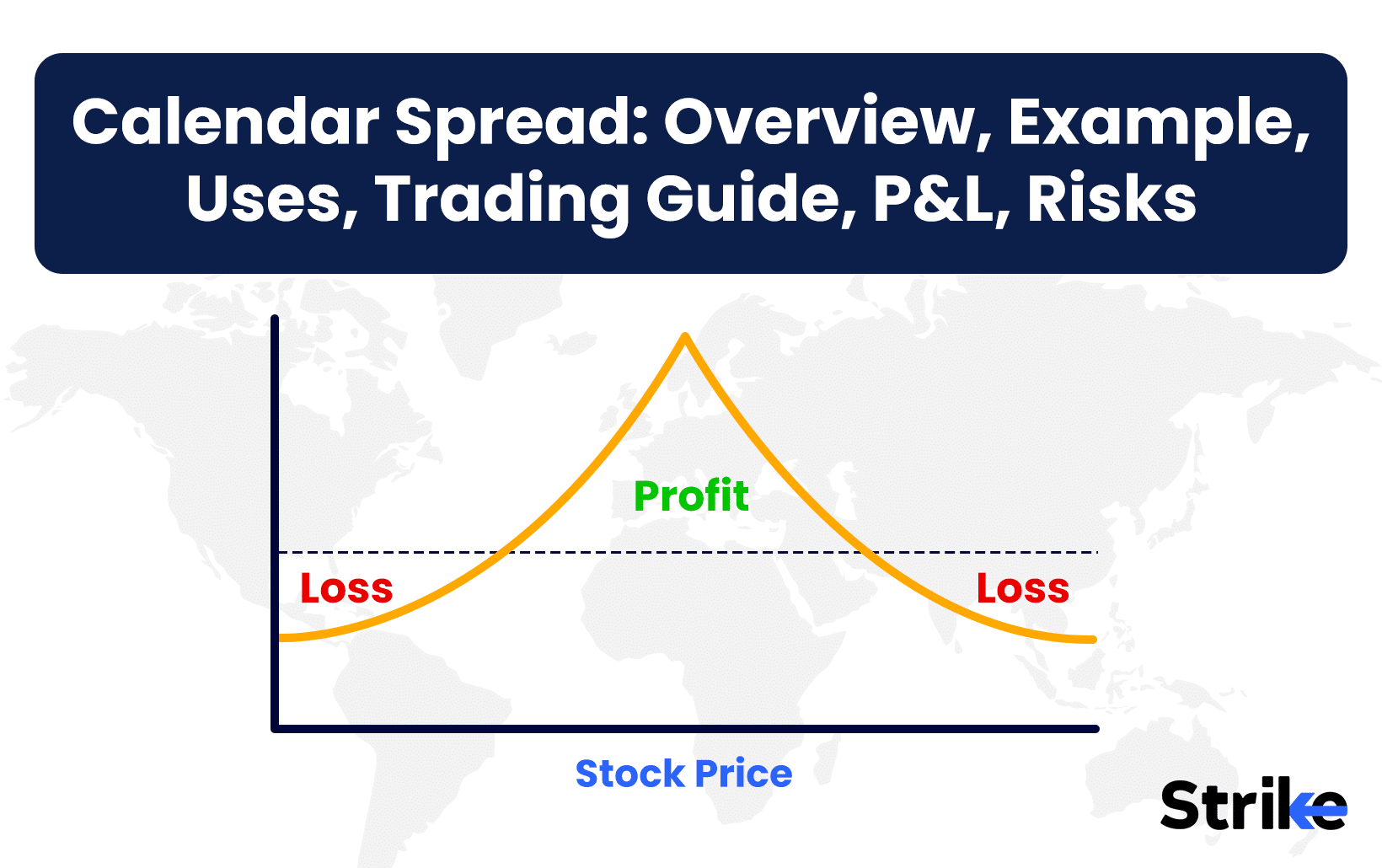
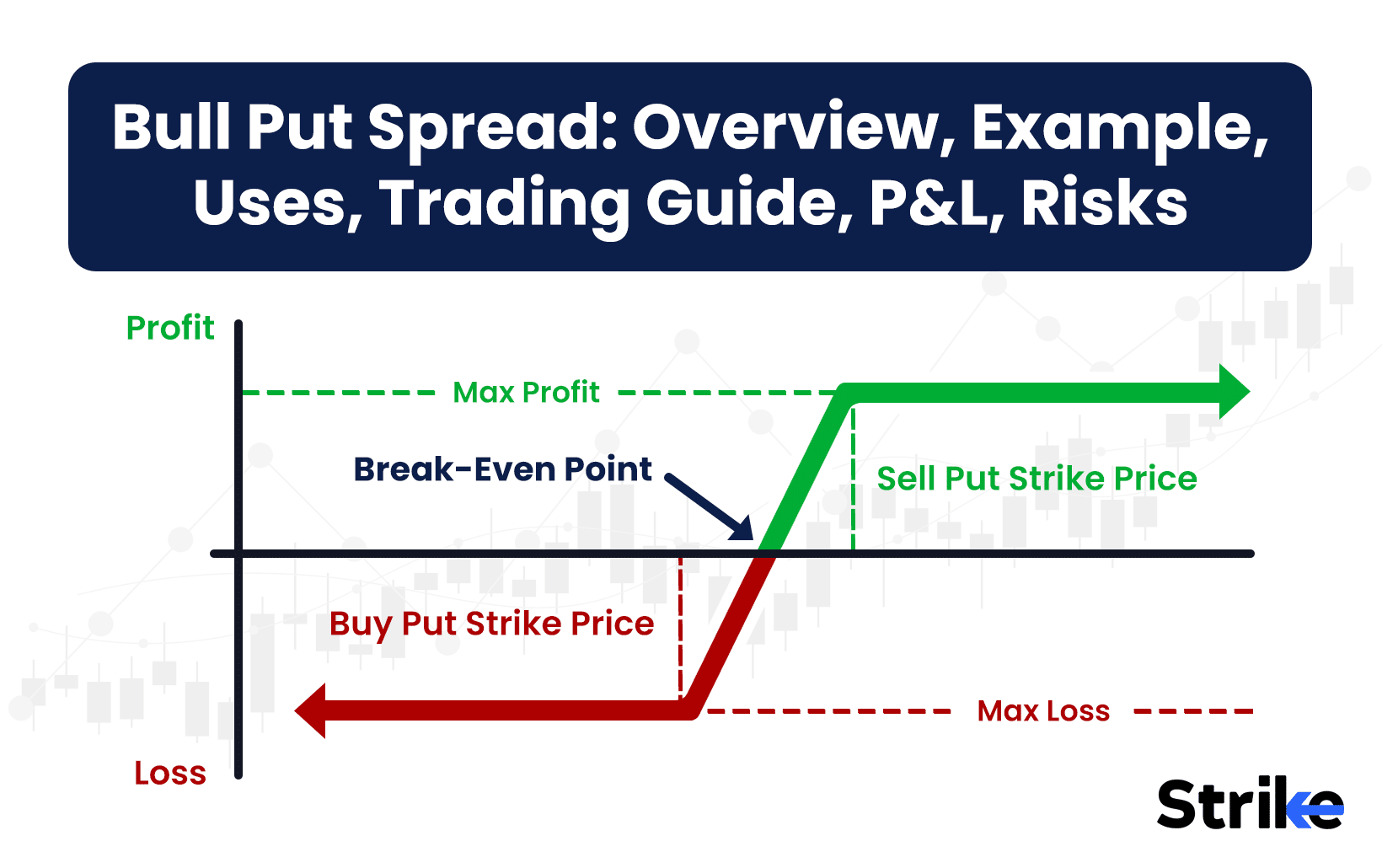





No Comments Yet